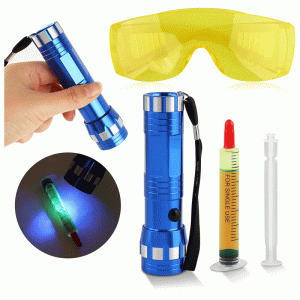
How Does An Air Conditioner Work In A Car
Most people would not give a second thought as to how a car air-conditioning system works. If asked a lot of people would likely respond, “I have no idea how they work. However, if you’re curious about how car A/C system works, please continue reading below for a deeper look.
How Does the AC system in a Motor Vehicle Work?
The air-conditioning system in a vehicle works by manipulating refrigerant between a liquid and a gaseous state. As the refrigerant changes states, it absorbs heat and humidity from the vehicles cabin and allows the system to give off cool air. To change the refrigerant between a liquid and a gaseous state, the air-conditioning system works controlling pressures and temperature.
AC System Refrigerants.
In years past automotive air-conditioning systems used R12 as the refrigerant. R12 was phased out in 1994 in line with the Montreal Protocol. R12 was a very effective CFC-chlorofluorocarbon refrigerant. During the late 1980s, scientists discovered that widespread usage of R-12 was damaging the Earth’s ozone layer. It is for this reason R12 refrigerant was phased out is no longer used.
Manufacturers transitioned from R12 to R134a in the mid-1990s. R134a is an HFC-based hydrofluorocarbon refrigerant that does not have the ozone destroying properties of R12 refrigerant. The newest refrigerant is R1234yf, which produces even fewer greenhouse gases than its predecessor. Europe requires the use of R1234yf refrigerant on all newly manufactured vehicles and is likely be the new global standard within a few years.
Car AC System Parts.
Listed below are the main components and their roles:
AC Compressor.
This is the “pump” that separates the low-pressure side from the high-pressure side of the AC System. The ac compressor takes in low-pressure gas and compresses it into high temperature/high-pressure liquid.
AC Condenser.
Reduces temperature of the refrigerant while maintaining high pressure. The refrigerant changes from gas to a liquid as it cools. Similar to the engine’s radiator, the A/C condenser uses forced air from the Condenser Fan to dissipate heat.
Receiver/Dryer.
The receiver/Drier Removes any moisture and contaminates from the refrigerant using a desiccant.
The receiver/Drier is mounted on high-pressure side of A/C system.
Expansion valve or Orifice Tube.
The Expansion valve or Orifice Tube lowers refrigerant pressure, which greatly reduces refrigerant temperature. Refrigerant is still in liquid form after exiting Expansion valve or Orifice Tube.
Evaporator.
Refrigerant changes back to gaseous state in the evaporator, causing a cooling effect.
Cabin air is cooled and dried as it blows across the evaporator. The evaporator is mounted inside the vehicles cabin behind the dashboard.
Characteristics of refrigerant.
Low temperature/low-pressure refrigerant enters the compressor.
High temperature/high-pressure refrigerant leaves the compressor.
Refrigerant cools and converts to liquid in the condenser under high pressure.
Receiver/Dryer removes moisture and filters impurities from the refrigerant.
The Expansion valve reduces refrigerant pressure.
Refrigerant converts back to gaseous state in the evaporator absorbing heat when air blows across evaporator.

What Does the TX Valve Do in a Car's AC? | Cool Car Air
[…] for thermal expansion valve, plays a crucial role in regulating the flow of refrigerant in your car’s AC system. Located between the evaporator and the air condenser, the TX valve controls the amount of […]
All You Need to Know About TX Valve - Cool Car Air Conditioning
[…] Installation: A faulty TX valve installation can further damage your car’s AC system and compromise its […]
the Advantages of Air Conditioning in a Car
[…] a cool, comfortable, and regulated interior for both drivers and passengers. the benefits of having air conditioning in a car, examine important variables that affect its operation, go over trade-offs, and address the […]
Top 10 Warning Signs of a Bad Car AC Evaporator & How to Fix It
[…] faulty evaporator can lead to pressure imbalances in the AC system, preventing the compressor from […]